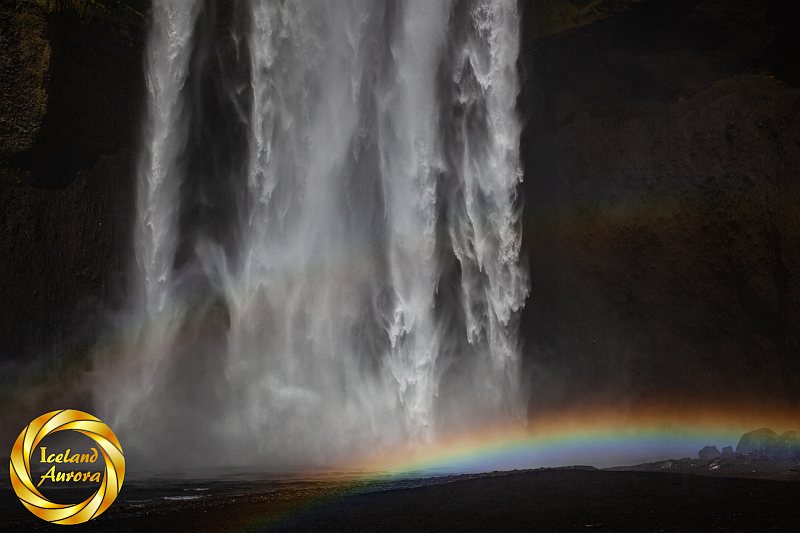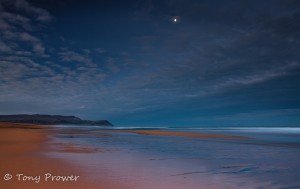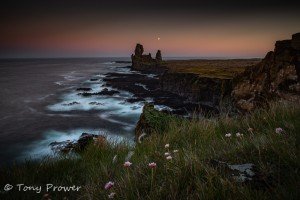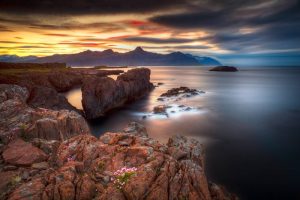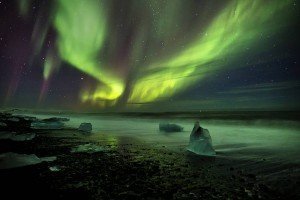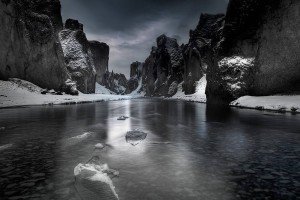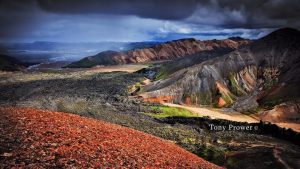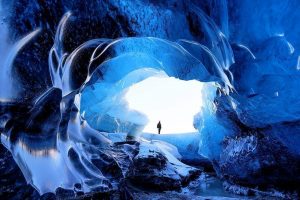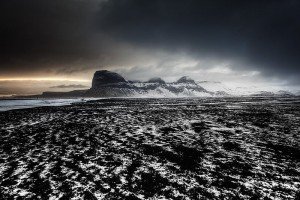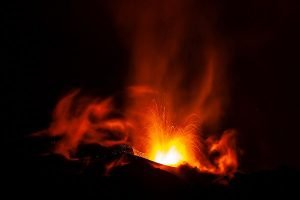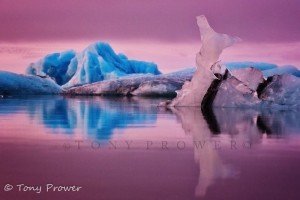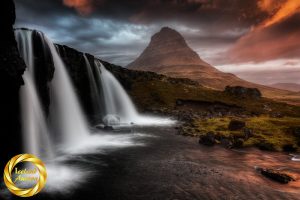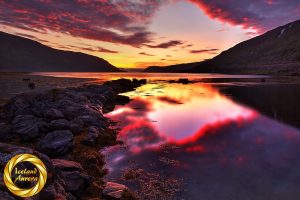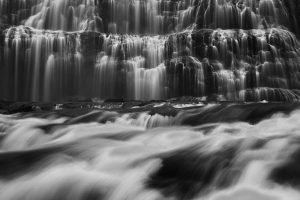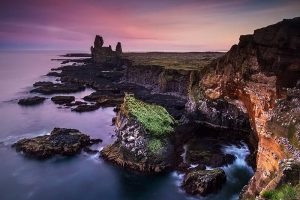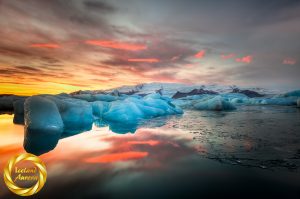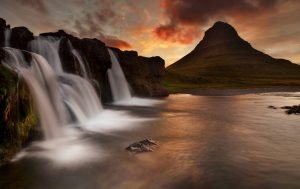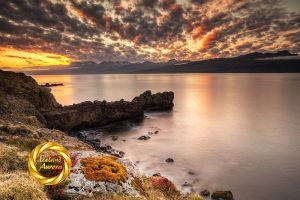Icelandic Waterfalls
My top ten
10 – Aldeyjarfoss Waterfall
At number 10 in our Icelandic waterfall list is Aldeyjarfoss, which is upstream from Godafoss. This waterfall can be accessed with a 4×4 in the summer, but you may need a Super-Jeep to visit Aldeyjarfoss in the winter. The waterfall can be viewed from many levels as long as you have climbing skills. Aldeyjarfoss Waterfall is loaded with basalt columns, so there are lots of foreground options with great textures.
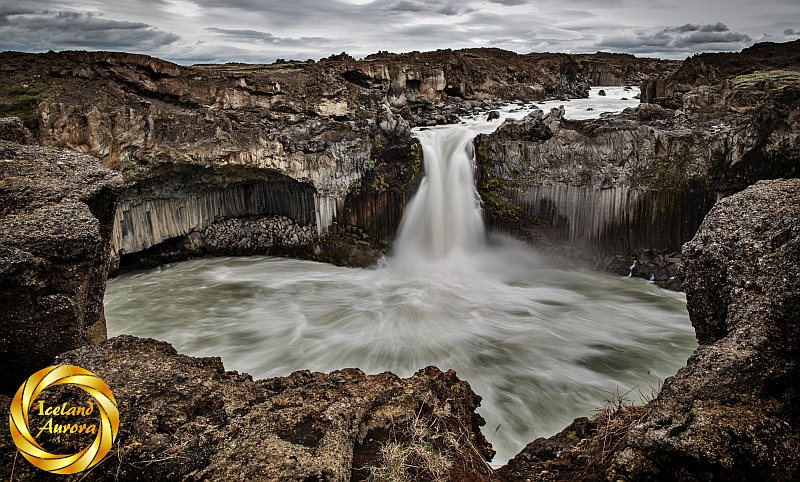
Top Tours in Iceland
9 – Seljalandsfoss Waterfall
Our ninth Icelandic waterfall is Seljalandsfoss. This is the waterfall that you can walk behind. In the summer, it is possible to catch the late-evening sunrise from behind the falls. The waterfall can be seen from the main ring road. There is a charge for parking, and last time I went, there was a shop and cafe. The toilets are well maintained and heated, which is a nice surprise in the winter. At night, there are two coloured spotlights that shine on the waterfall; this makes Seljalandsfoss waterfall a poor choice for the Northern Lights.
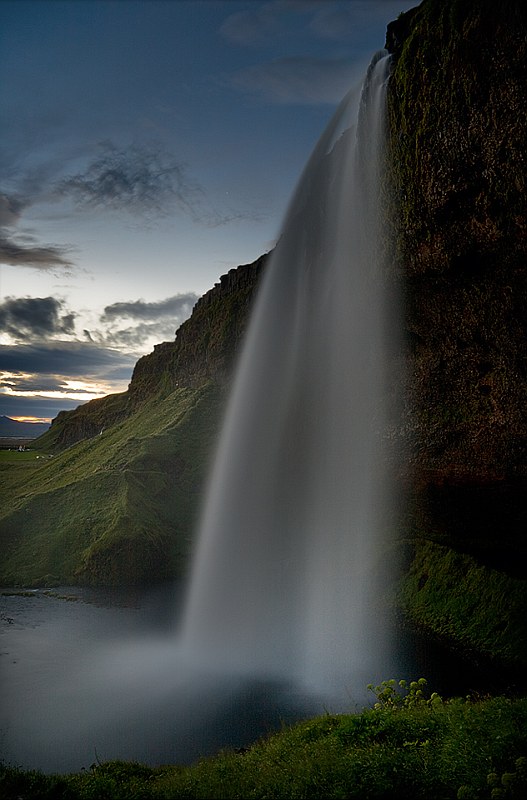
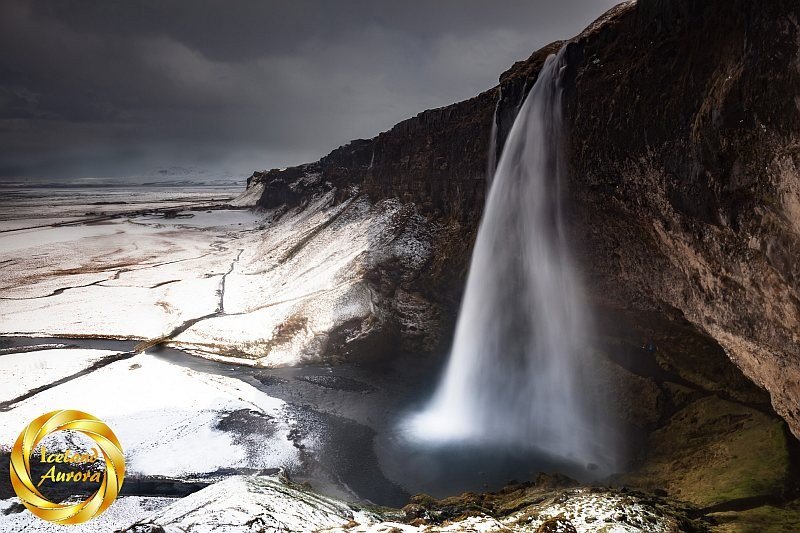
Photo Tips
The potential for getting all your camera gear wet is quite high at Seljalandsfoss waterfall. Going behind the waterfall is guaranteed to get you wet. For this reason, I would recommend photographing as much of the waterfall from the dry zones (like the bridge) before going behind. I would advise against taking a tripod behind the waterfall unless you are a master at protecting your camera and lens from the spray. A monopod can work to get slow shutter speeds. For lesser mortals, I would suggest keeping your camera under the protection of your raincoat and bringing it out only for quick shots. Have your camera set up in shutter priority with a slow hand-held shutter like 1/60 sec.

8 – Skógafoss Waterfall
Our eighth Icelandic waterfall is Skógafoss. This huge curtain of water falls on the South Coast, where the ocean used to pound the shore. Skógafoss is fed by two glaciers, which makes it unique. It is difficult to photograph because of the number of tourists, but if you climb to one of the viewpoints, you will be out of our shots. The waterfall is best visited in the winter because the southern sun lights up the south-facing waterfall and sprays. The sun hits the full cascade after 1 p.m. There is a campsite in the summer and basic facilities all year round. There are two museums nearby, as well as hotels and guesthouses.
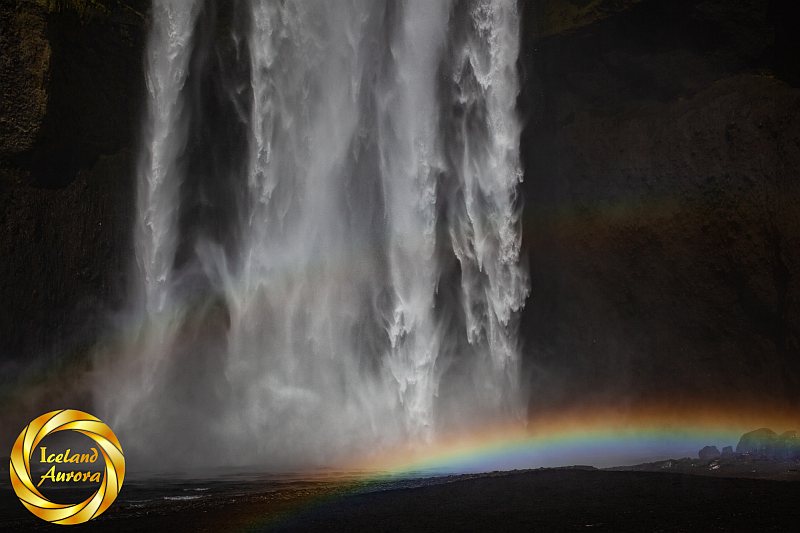
7 – Öxarárfoss Waterfall
Number seven in our Icelandic waterfall collection is Öxarárfoss at þingvellir National Park. This is the only waterfall in the world that falls from one continent into another. Öxarárfoss is not included on most of the Golden Circle bus tours! Private tours do visit the waterfall.
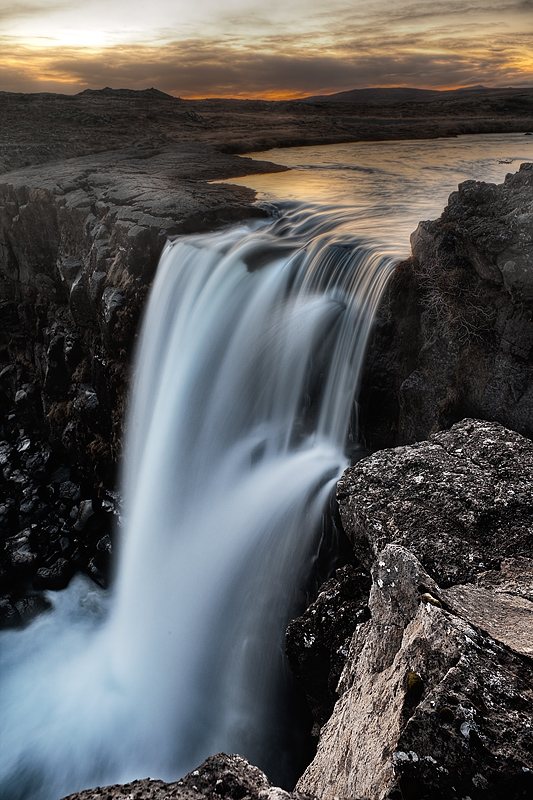
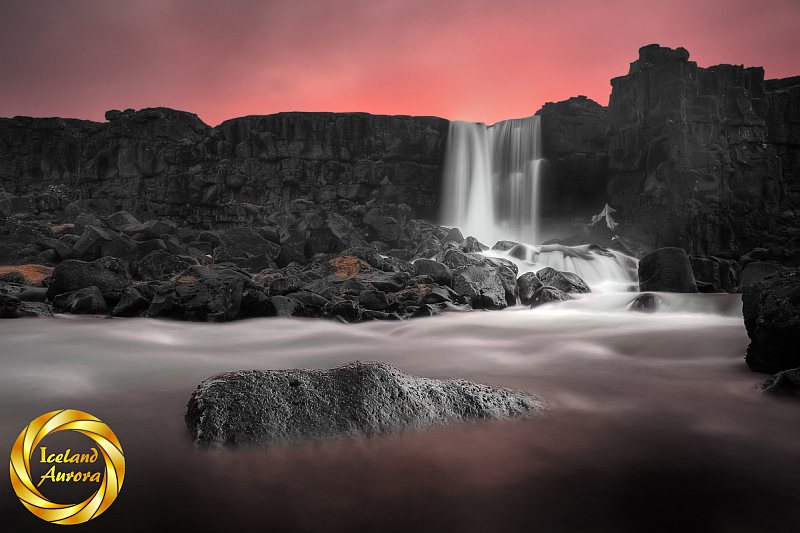
6 – Svartifoss Waterfall
Number six on our list of Icelandic waterfalls is Svartifoss. This waterfall is high on Skaftafell. You need to be in fair fitness to hike up to the waterfall, but there are plenty of other waterfalls to stop at on the way up. At Svartifoss waterfall, there is a viewing platform with a good view of the waterfall.
Photo Tips
You can get most of your photos from the steel viewing platform. With a telephoto, you can zoom into the waterfall and get the intimate textures of the basalt rock. 24 mm will capture the whole scene nicely and is also good to use down at the river. Using a 50 mm lens from the viewing platform will enable good panorama photos that can include the whole wall of basalt columns. There is a bridge with some photo opportunities with a longer lens.
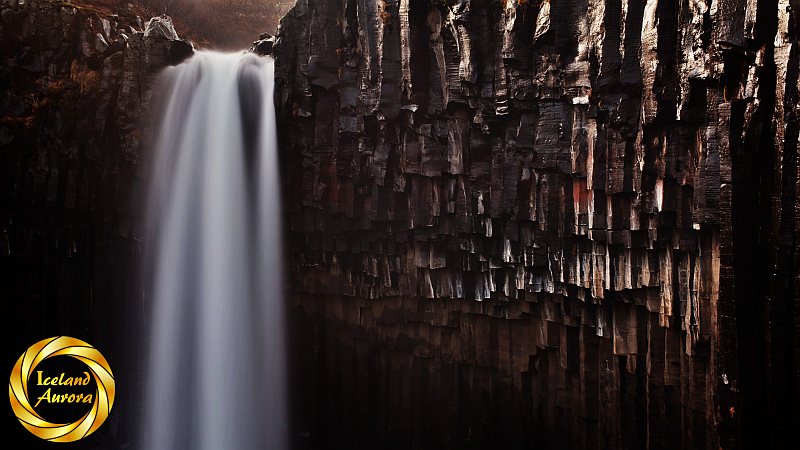
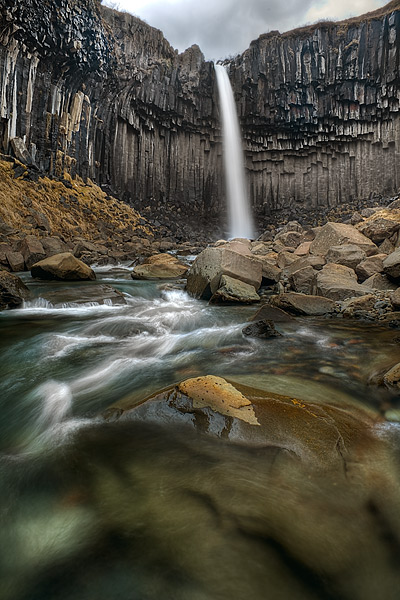
5 – Gullfoss Waterfall
Number five in this collection of Icelandic waterfalls is Gullfoss. It means “Golden Falls”, but you have to be there at sunrise or sunset to find the gold. Access can be difficult, and people risk their lives to get photos. Gullfoss waterfall is only a few hours from Reykjavik and just a 10-minute drive from Geysir. The waterfall is the largest in Iceland and also the largest waterfall in Europe. The waterfall can be seen on all Golden Circle tours. The upper car park has a cafe and gift store. Is it possible to do a snowmobile tour from Gullfoss.
Photo Guide
The best winter light is around 1 p.m. from the lower plateau. This will give you rainbows from the easy viewpoints near the car park. The best time in mid-summer is 6 a.m. from the part of the footpath that is closest to the waterfall. In clear weather, a double rainbow can be captured from this point. Experiment with slow shutter speeds for the milky water effect. Shutter speeds of 1/4 seconds work well at Gullfoss. I was always able to capture the whole waterfall with 24 mm from all the viewpoints. From the lower car park, a 50 mm lens will frame the whole waterfall. Use a telephoto from the upper-level viewpoints.

4 – Dettifoss Waterfall
Number four in this collection of Icelandic waterfalls is Dettifoss. Dettifoss is in the north of Iceland and is fed by melt water from the Vatnjokull glacier. It is considered to be the most powerful waterfall in Iceland. Dettifoss can be accessed fairly easily from the west for most of the year and from the east in the summer.
Camera Gear
Either side you end up on, you will need to hike before getting to Dettifoss waterfall. My recommendation for gear would be a travel tripod with a 24 mm and 50 mm lens. If you are able to get really close to the waterfall, the 24 mm will capture the full cascade. From some of the distant view points, the 50 mm will capture the whole scene well.

3 – Kirkjufellsfoss Waterfall
Number three in our list of Icelandic waterfalls is Kirkjufellsfoss. This waterfall in on the North side of the Snæfellsness peninsular and has become famous as the most photographed waterfall in Iceland. The falls has 3 spouts at the top level and the bottom level has multiple cascades. The top level is easier to photograph both waterfall and Kirkjufell mountain.
PHOTO TIPS
I prefer to photograph the waterfall with the mountain in the background. You will need a 24 mm lens or wider to include both. A 50 mm lens will frame Kirkjufell Mountain quite tightly from the waterfall, with room for a tiny part of the falls. Wide-angle lenses will allow you to get many more compositions of the waterfall. In good conditions, it is possible to get really close to the waterfalls, and this will give your photos a more unique feel.

2 – Goðafoss waterfall
The second best waterfall is Goðafoss, the Waterfall of the Gods. This is a horse-shoe waterfall in the middle of a huge lava field in North Iceland. According to ancient legend, the Ljósvetningagoði 1000 years ago declared Christianity to be the new religion and cast his old Pagan idols into the falls.
Photo Guide
Experiment with 1/4 second to 1/125 second shutter speeds for the silky water effect. Slow shutter speeds can be achieved with a Neutral Density Filter (N.D.) in the daytime. My strong recommendation is to schedule your photo shoot for an hour before and an hour after Sunset/Sunrise.

1 – Dynjandi Waterfall
The top waterfall in Iceland is Dynjandi in the Westfjords. It is the only waterfall on our list that doesn’t end in “foss”, but this doesn’t mean it lacks any “foss-ness”. The Dynjandi waterfall complex is massive and contains every kind of waterfall you could imagine, from delicate cascades to thunderous flumes. I call Dynjandi “the mother of all waterfalls”.
PHOTOGRAPHY
Photographs don’t do Dynjandi Waterfall justice. The shape of the waterfall becomes distorted as you get closer to it and the spray can be intense. A drone will do a better job of avoiding the spray and capturing the true shape of the main cascade. It is a good idea to include a person in your photo to show the scale. I have taken many great landscape photos at this location with Dynjandi Waterfall behind me.

